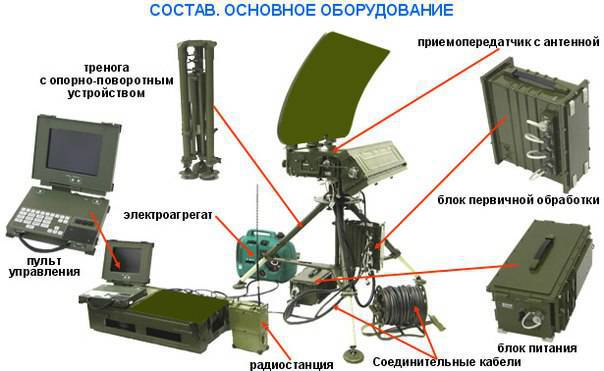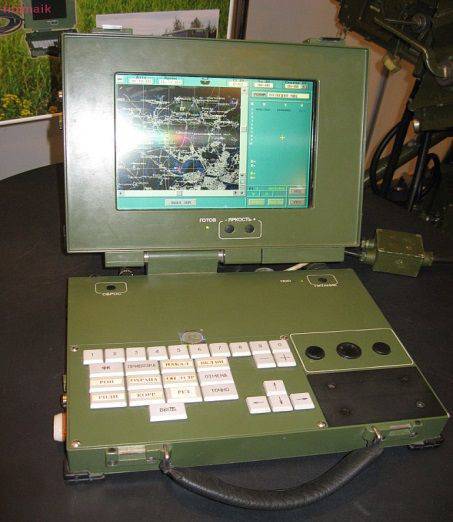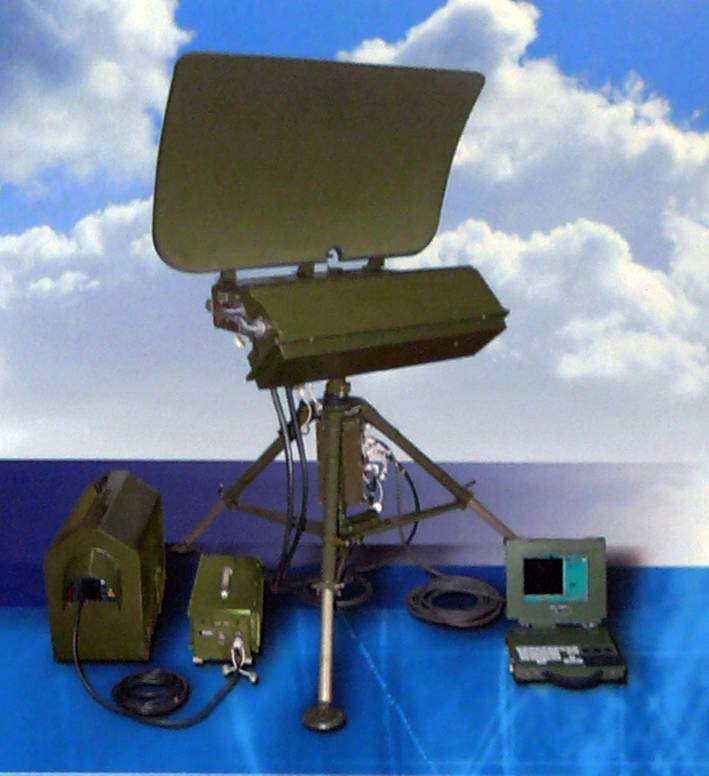Radar complex intelligence and fire control 1L271 "Aistenok"

In August 2008 of the year, during the exhibition MVSV-2008, the Tula NPO Strela (part of the Almaz-Antey Air Defense Concern) showed its new development for the first time: the 1L271 Aisthenok portable radar complex. This system is designed to equip units of the "company-battalion" level and is capable of performing tasks related to the detection of various objects, both on the ground and in the air. The main task of the 1Л271 complex is to ensure the operation of artillery units, namely, to determine the coordinates of the enemy’s artillery and to adjust its fire.
In view of the intended methods of application, the Aistenok complex was made in the form of a collapsible structure consisting of a set of modules and suitable for carrying a calculation or transport on various vehicles. The total weight of the system components is 135 kg. The assembly of the complex and preparation for work takes about 5 minutes. The 1L271 radar consists of a tripod with a turntable, a transceiver with an antenna, an electrical unit with a power unit, a unit for the primary processing of the collected information, a control panel and a radio station. The elements of the complex are connected using a set of cables.
The main objectives of the radar "Aistenok" is tracking the work of their own and enemy artillery. Thus, the complex is able to track in flight mortar ammunition of caliber from 81 to 120 mm. In this case, the automation calculates the parameters of a mine’s flight and determines its starting point or place of fall. In the first case, this information can be used to retaliate against the enemy’s mortar, in the second, to adjust the firing of friendly units.
Also, the 1Л271 system can be used to control the firing of artillery shells from 122 to 152 mm. In this mode, the radar detects the gaps of the fallen projectiles and calculates their location, so that the artillery can adjust its fire for a successful destruction of the target.
The third function of the 1Л271 radar is to detect tank-type ground moving targets. Information about the location of the enemy's equipment can also be transferred to artillery for striking.
The Aistenok complex uses an antenna made in the form of a two-surface mirror with orthogonal polarization and electronic switching in elevation and azimuth using an irradiating linear phased array. To simplify and simplify the design of the antenna is not equipped with mechanical drives for pointing. For this reason, the antenna is rotated in azimuth and elevation manually.
Information about the operating modes of the radar station, tags and trajectories of detected targets, security zones and other information is displayed on the color display of the control panel. To transmit information about the detected targets in the complex has a radio station.

Transceiver device radar "Aistenok" works in the centimeter range. Despite the absence of its own mechanisms of rotation, the antenna provides observation of the sector width 60 ° in azimuth. Target detection can be performed at a distance from 200 m to 20 km. The detection range of a particular target depends on its type.
The maximum detection range of 20 km is achieved in the case of ground targets of the "tank" type in the presence of radar visibility. In this case, detection is provided. tanksmoving at speeds from 2,5 to 60 km / h, with a probability of at least 0,8.
At half the distances (up to 10 km), the 1Л271 station can detect gaps in shells from 122 to 152 mm and can be used to adjust the fire. In this case, the gunners are able to compare the coordinates of the target with the coordinates of the explosive shells and make the necessary corrections.
When working with mortars, the maximum detection range is reduced to 5 km. At such distances, the Aistenok complex with a probability of at least 0,8 can detect ascending or descending flight segments of mortar mines and calculate the coordinates of the mortar. In addition, at the same distances, detection of mines of friendly artillery and the calculation of their fall place using trajectory data is ensured. The minimum range at which the 1Л271 system can detect an enemy mortar is 750 m.
The Aistenok 1L271 reconnaissance and fire control system intersects targets with an accuracy of several tens of meters. The values of possible errors depend on the type of goal. Taking into account the error in topographic location in 3-5 m, the complex is able to calculate the location of the enemy’s mortar (if a mine is detected on the ascending flight segment) with an accuracy of 30 m. mines are calculated with an accuracy of 200 m. The error in detecting shells and moving ground objects does not exceed 30 m.
Radar "Aistenok" can be used at any time of the day and in all weather conditions that impede visual observation of the battlefield. The complex is powered by a gasoline electrical unit. The time of continuous operation of the system from an autonomous energy source is stated at the level of 6 h.
From 2008, the Aistenok Radar 1L271 is regularly shown at various exhibitions of weapons and military equipment. Nevertheless, data on the procurement of these systems for the Russian ground forces are not yet available. Curious newsassociated with the operation of the complex, appeared a few days ago. On January 15, the militia of the Donetsk People's Republic allowed the OSCE observers to their positions. During this visit, observers were shown various systems, including the Aistenok complex, used by the militia to detect shelling by the Ukrainian armed forces. Thus, the current conflict can be considered the first war in which a new Russian radar station was used.

Details of the supply radar 1Л271 in the NPT is unknown. Likewise, the plans of the Russian Ministry of Defense to purchase such systems in the interests of their own units remain secret. It cannot be ruled out that a new radar complex of reconnaissance and control in the course of the current conflict must first be tested and tested in a real war, after which its purchases will begin for the Russian armed forces.
On the materials of the sites:
http://almaz-antey.ru/
http://arms-expo.ru/
http://npostrela.com/
http://vz.ru/
http://bmpd.livejournal.com/
Information